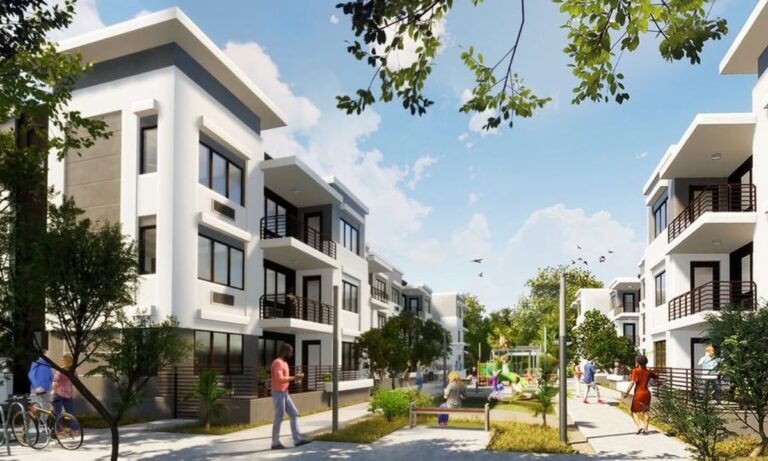
Urbanisation in India is rapidly transforming the country’s development trajectory. As cities expand and evolve, the concept of smart cities has emerged as a key strategy to manage growth, improve infrastructure, and enhance quality of life. The idea is simple yet profound: combine technology, sustainability, inclusive planning and efficient governance to build cities that work for people-not the other way around.
In the Indian context, the Smart Cities Mission (SCM) launched in 2015 has been the flagship initiative driving this transformation.
What ‘Smart Cities’ Means
Smart cities are not just about digital dashboards or flashy technologies. The goal is to create urban centres that are:
- Liveable: good housing, open spaces, safe mobility, air & water quality.
- Sustainable: efficient use of resources, minimal environmental impact, resilience to shocks.
- Inclusive & Efficient: digital-enabled governance, citizen participation, better access to services.
In India, the SCM adopted two main approaches: Area-Based Development (ABD) for defined zones, and Pan-City Projects for technology and services across the entire city.
Indian Progress & Achievements
Some of the key milestones:
- As of June 2025, 94 % of the 8,067 projects sanctioned under the mission have been completed, amounting to ~ ₹1.64 lakh crore invested.
- All 100 selected cities now have Integrated Command & Control Centres (ICCCs) that bring together smart technologies to manage services like water, transport, and waste.
- There are clear benefits: better public transport, reduction in pollution, improved emergency response and infrastructure upgrades.
These achievements show that the vision is being translated into action – although not without challenges (which we will discuss next).
Key Drivers of the Expansion
Several forces are pushing the smart city agenda:
- Rapid urban growth: With rural-to-urban migration and rising living standards, cities are under pressure to deliver services at scale.
- Technology: IoT, AI, data-analytics, smart grids and sensors are enabling smarter service delivery.
- Sustainability & climate-resilience: Urban centres must adapt to flood risk, heat islands, resource scarcity. Smart city planning helps integrate these concerns.
- Policy & finance push: Government support at national and state levels, special vehicles (SPVs), and funding models are facilitating implementation.
What Works: Case Examples
- Rajkot’s Greenfield Smart City is rated platinum by the Indian Green Building Council, integrates green belts, non-motorised transport, water management and pedestrian infrastructure.
- Many cities under SCM have delivered smart roads, cycle-tracks, upgraded classrooms, health centres and inclusive infrastructure.
These show that when planning aligns with execution and local context, large-scale impact is achievable.
Challenges & Gaps
Despite the progress, several issues persist:
- Uneven implementation: Some cities lag behind in delivery of projects or the benefits don’t reach all citizens equally.
- Resource constraints & cost-overruns: Smart infrastructure can be expensive, and maintenance or scalability becomes an issue.
- Technology as an end itself: There’s risk of focusing on sensors, dashboards or surveillance rather than people-centric services. For example, projects emphasising CCTVs or “smart” surveillance sometimes falter.
- Inclusion & equity: Urban poor, informal settlements may be left out of planning or benefit flows.
- Sustainability vs Speed: Rapid rollout can sometimes ignore local ecology, heritage or community engagement.
Addressing these gaps is critical if the future smart cities are to be truly sustainable and inclusive.
Road Ahead: What Must Be Prioritised
For the next phase of smart-city expansion, focusing on the following will be key:
- People-centric design: Planning infrastructure with input of residents, including marginalised groups.
- Scalable, affordable solutions: Technologies and services must be maintainable and replicable, not just pilot experiments.
- Climate-resilient infrastructure: Urban heat, floods, resource stress will become the norm – cities must embed resilience.
- Governance & data ethics: Transparent governance, data protection, public trust will be vital.
- Hybrid funding models: Public-private partnerships, long-term maintenance funds, and community ownership will strengthen sustainability.
- Regional integration: Smart cities cannot function in isolation – they must integrate with wider regions, transport corridors, satellite towns and rural linkages.
Why It Matters for All Stakeholders
Whether you are a city-resident, business owner, policymaker, student or a global investor – smart cities matter.
- For residents, they offer better quality of life, safer mobility, greener spaces, and efficient services.
- For businesses, smart cities present opportunities in infrastructure, green tech, data services, clean energy.
- For governments, they help meet sustainable development goals (SDGs), climate commitments, and urban growth challenges.
- For investors & innovators, they open markets for scale-technology solutions, urban services, and new business models.
Conclusion
The expansion of smart cities in India is more than a buzz-phrase-it’s an essential lens through which the future of urban living will be shaped. The progress achieved so far under the Smart Cities Mission is notable, but the real success will depend on how inclusive, sustainable and resilient those cities become. If done right, smart city expansion can transform not only infrastructure, but lives – and through that, the fabric of society.
Cities are where change happens fastest-and smart cities are where change can happen smartly.






